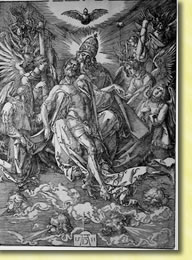 We begin with the Scholastic Distinction Between Ordo Cognoscendi (Order of Knowing) and the Ordo Essendi (Order of Being): The order in which we come to know things is the opposite of the order in which they exist.
We begin with the Scholastic Distinction Between Ordo Cognoscendi (Order of Knowing) and the Ordo Essendi (Order of Being): The order in which we come to know things is the opposite of the order in which they exist.
Applied to theology: The basic principle of theology is that God is in se who he is in his revelation. In ordo essendi, God exists necessarily and freely as eternal Triune identity. In ordo cognoscendi, we come to know God through his economic acts in history, recorded and witnessed by prophets and apostolic eyewitnesses. Knowledge of God as Triune follows knowledge of God as incarnate in Christ, which follows the crucifixion and resurrection of Jesus. We know God is and has always been Triune because God the Father raised his Son Jesus from the dead.
Scripture is the inspired prophetic and apostolic witness to the Triune God’s economic revelation in history. In the ordo cognoscendi, we come to know who God is first through this prophetic and apostolic witness. Scripture is referential in two directions: history (the economy of redemption – the economic Trinity); ontology (God in se – the immanent Trinity).
The primary language of Scripture is not the language of ontology, but the language of symbol, metaphor, and narrative. The proper object of Christian faith is the subject matter of revelation (the Triune God in se), but this knowledge is mediated to us through the biblical language of symbol, metaphor, and narrative. Our subsequent knowledge of the Triune God as the subject matter of revelation enables us to re-read Scripture in light of its economic conclusion. We know how the story begins (with the Trinity) because we know how it ends (God the Father raised Jesus from the dead).
The language of Scripture is the language of “common sense” realism (symbol, metaphor, and narrative), of realities in relation to us (pro nobis). The language of ontology is the language of “critical realism,” of things in themselves (in se). In the ordo cognoscendi, the move from the economic to the immanent Trinity is the move from common sense to critical realism, from narrative, symbol, and metaphor, to history, and then to ontology. Phil. 2:5-11 and Nicea are not saying different things, but one speaks in the language of common sense realism (narrative and symbol); the other speaks in the language of critical realism (ontology).
What does this have to do with predestination? (more…)


